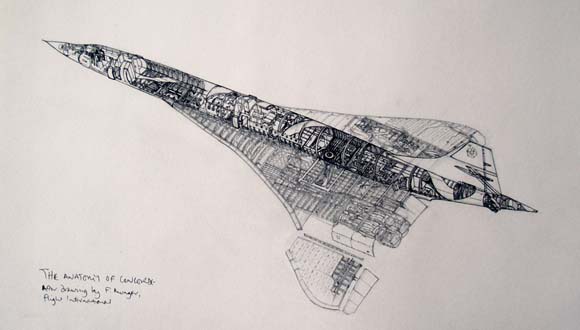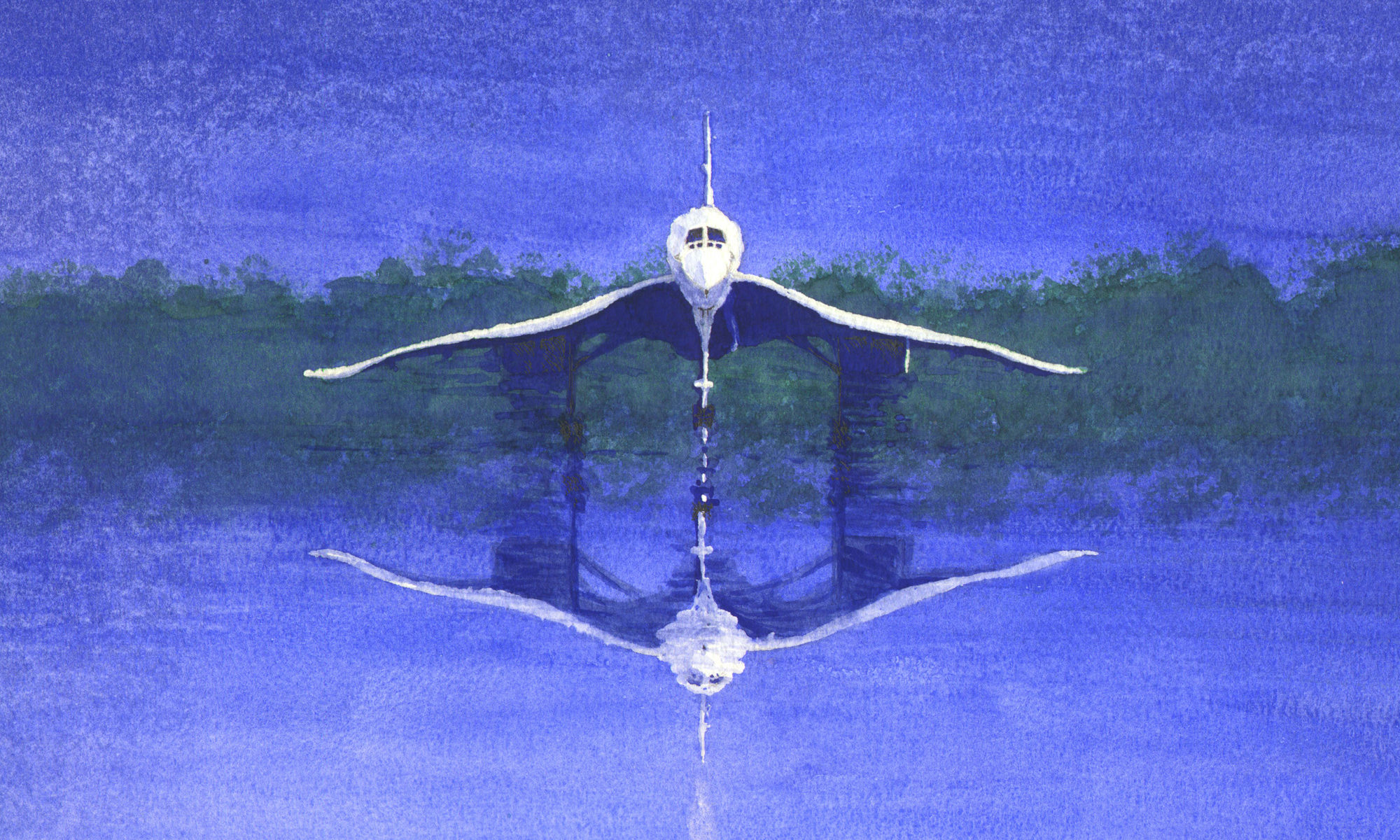In September, I went to a talk at the Royal Aeronautical Society entitled “Beneath the skin”, given by Tim Hall of Flightline Arts, who spent most of his working life as a cut-away illustrator for Flight International. He gave a fascinating talk about the history of technical cut-away drawings, particularly drawings of aircraft. This kind of work is some way away from what most aviation artists do, but even in this field there are different styles of expression.
The first technical cut-away drawings were produced over 100 years ago, in cycling magazines, to explore the technical details of bicycles for laymen. The “father” of technical aviation illustration was Max Millar, who produced his first drawings for Flight magazine in 1912 and continued working until beyond the Second World War. He coined the term “engineer artists” (with the emphasis on “engineer”) to describe himself and his colleagues. His drawings, in pen and wash, were accurate and easy to read. Another eminent cut-away artist was James (Jimmy) Clark, who worked from the 1930s to the 1960s on The Aeroplane. His approach was different from Millar’s – while working quickly and in immense detail (often going to factories and working from life), he used to exaggerate or emphasise certain details to aid the viewer’s understanding. A third master illustrator, forever associated with Flight and then Flight International, was the late Frank Munger, who produced his first work in the 1940s – and whom Tim described as “unflappable” and “with a photographic memory”. (As I say elsewhere, I copied Frank Munger’s superlative cutaway of Concorde – my effort is shown below.)

Tim described the astonishing way in which the cut-away artists worked. They would visit the aircraft factories and do their initial sketches from life on “detail paper”. They drew freehand, often not even using an easel – just holding a sheet or pad in their hands. After about a week of amassing details they would return to the office to produce the ink drawing. They used mapping pens, which Tim said give a better, more variable line than the later Rapidographs. Their ink drawings were also done freehand; the only tools used were a straight edge (which they used even to draw ellipses) and dividers (to plot proportions).
From the 1990s the Flight International illustrators started using Photoshop, although apparently their finished artworks could often overload the memory on the printers’ computers! Tim ended by describing today’s computer-aided techniques – he now draws with a mouse, and lays in tints electronically.
Tim had brought along a selection of original cut-away drawings from throughout the history of Flight International and its predecessors Flight and Aeroplane. I was amazed at the way the work was minutely accurate but still artistically expressive, with no hint of being “dead” or “mechanical”. The quality was even more impressive since the work was done freehand. I spoke to Tim Hall afterwards and had a look at his amazing website, and he very kindly sent me a copy of his book, Beneath the Skin. As a lover of fiddly detail, I thoroughly enjoyed my introduction to this fascinating subject.


Hello,
I too enjoy the work by Tim Hall. However your blog seems to be one of the only mentionings of his career. He got an revard on his lifetime archievement three years ago (https://www.flightglobal.com/flightglobal-triumphs-in-aerospace-media-awards). If you still have his email adress I would be happy to write him an email to ask him about his book.
Thanks for your interesting blog and the nice record of Tim Halls lecture!